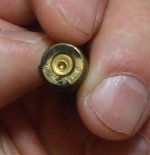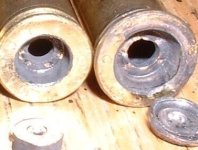I was able to pick up a pair of Brazilian 1908's for a good deal because the barrels were basically gone ... far too pitted to even consider shooting. Anyway, they are in 7x57 currently, but I was thinking of taking one of them and making a 280 Remington Ack Imp ...
My question is one of receiver strength and reputation. For example, are the Brazilian 1908's solid enough to safely build a 300WinMag on? I only ask this because if people do the belted mags on them routinely, then they will easily handle the 30-06 pressure levels of a 280 Rem.
Thanks,
Saands
My question is one of receiver strength and reputation. For example, are the Brazilian 1908's solid enough to safely build a 300WinMag on? I only ask this because if people do the belted mags on them routinely, then they will easily handle the 30-06 pressure levels of a 280 Rem.
Thanks,
Saands





